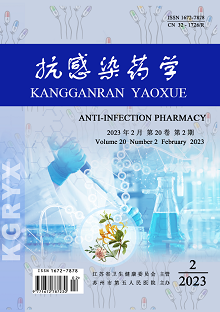YANG Meng-jie, ZHONG Wen, CHEN Ya-jing, ZHOU Mi, YANG Fan, LU Jun, WANG Mei
Objective: To investigate the optimal dose of voriconazole for Chinese children of different age groups, so as to provide reference for clinical rational drug use. Methods: A retrospective analysis was conducted on 42 children of different age groups who received voriconazole injections (4 or 7 mg/kg q12h) at Children's Hospital of Soochow University to assess the optimal dose of voriconazole in Chinese children of different age groups. Results: With the same dose, the median trough concentration of voriconazole in patients aged [2,6) was significantly lower than that in patients aged [6,12) or [12,18). There was no significant difference in the trough concentration of voriconazole between the patient groups aged [6,12) and [12,18). When the dose of voriconazole was 4 mg/kg q12h, the serum drug trough concentration of 80% of children aged [2,6) could not reach the minimum target recommended by international guidelines (1 mg/L). When the dose was increased to 7 mg/kg q12h, only 37.5% of patients in this age group could not reach the minimum target trough concentration. Intravenous infusion of 4 mg/kg q12h of voriconazole could achieve the target trough concentration in 72.7% of children aged [6,12). When the dose was increased to 7 mg/kg q12h, 60% of children aged [6,12) had a trough concentration of voriconazole higher than the maximum value of 5.5mg/L recommended by guidelines. Conclusion: Age and dose have a significant impact on the trough concentration of voriconazole in Chinese pediatric patients. For children aged [2,6), most patients cannot reach the minimum target trough concentration at a dose of 4 mg/kg q12h of voriconazole. For children aged [6,12), the dose of voriconazole at 7 mg/kg q12h is relatively high, so a dose of 4 mg/kg q12h is more recommended as the appropriate dose for children aged 6 and above in China.
